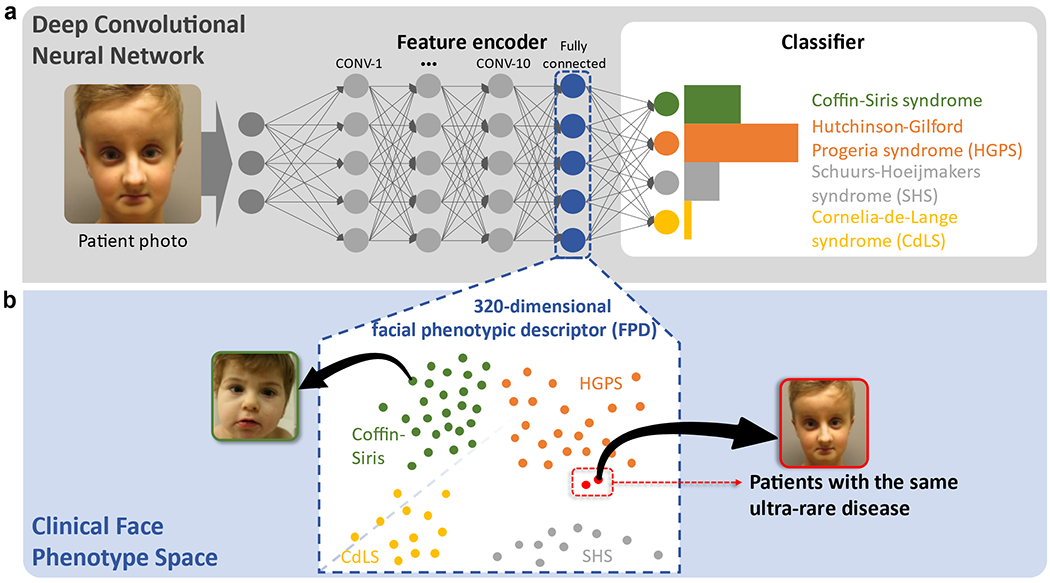Figure 2: Concept of GestaltMatcher.

a, Architecture of a deep convolutional neural network consisting of an encoder and a classifier. Facial dysmorphic features of 299 frequent syndromes were used for supervised learning. The last fully connected layer in the feature encoder was taken as a Facial Phenotypic Descriptor (FPD), which forms a point in the Clinical Face Phenotype Space (CFPS). b, In the CFPS, the distance between each patient’s FPD can be considered as a measure of similarity of their facial phenotypic features. The distances can be further used for classifying ultra-rare disorders or matching patients with novel phenotypes. Take the input image shown in the figure as an example: the patient’s ultra-rare disease, which is caused by mutations in LEMD2, was not in the classifier, but was matched with another patient with the same ultra-rare disorder in the CFPS4.
